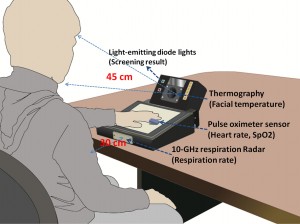Imagine that the worst infectious diseases – anthrax, small pox, bird flu, Dengue Fever, Ebola Virus, and ones you may not have heard of yet. Imagine them kept in a laboratory that is so secure that everyone is monitored going in and going out. Every interaction a person has in any place in this laboratory is monitored. You want a place like this- you want a secure place where these dangerous biologic agents are kept, studied, and when new threats come in they can be quickly investigated.
I’ve worked in a facility like this, while in graduate school at The University of Chicago. You had a special key card (and this was in the 1970’s) to get into the laboratory, and you went through airlock doors. Freezer units kept at ultra low temperatures to keep the virus inactive. Special growing conditions to insure that there was no contamination of people who worked there- be they graduate students, research scientists, or the janitor. Even the janitor had special training, and would not touch anything he didn’t understand.
The news out of the Center for Disease Control that the bioterrorism laboratory is closed while they work on developing protocols for handling of these agents is disturbing, but necessary. We need these labs up and functioning to be able to assist in finding new technologies to detect problems, to inactivate infectious disease, and to test out anti-viral medications.
While the news has made a lot of heat out of the incidents, I worry less about what has happened at those laboratories than I worry about the lone passenger on a commercial jet coming from the middle of Africa with a cough and a fever. I don’t worry about the children coming across the border, they are isolated and checked – but we do not have an effective mechanism for checking people who travel freely into the United States.
The TSA worries about their shoes- but I worry about their lungs.

New screening techniques can rapidly determine if someone is suffering from the flu – and can be easily placed into airlines. The one above comes from Toyko.
Health
Vol.5 No.8E(2013), Article ID:36063,6 pages DOI:10.4236/health.2013.58A5002
